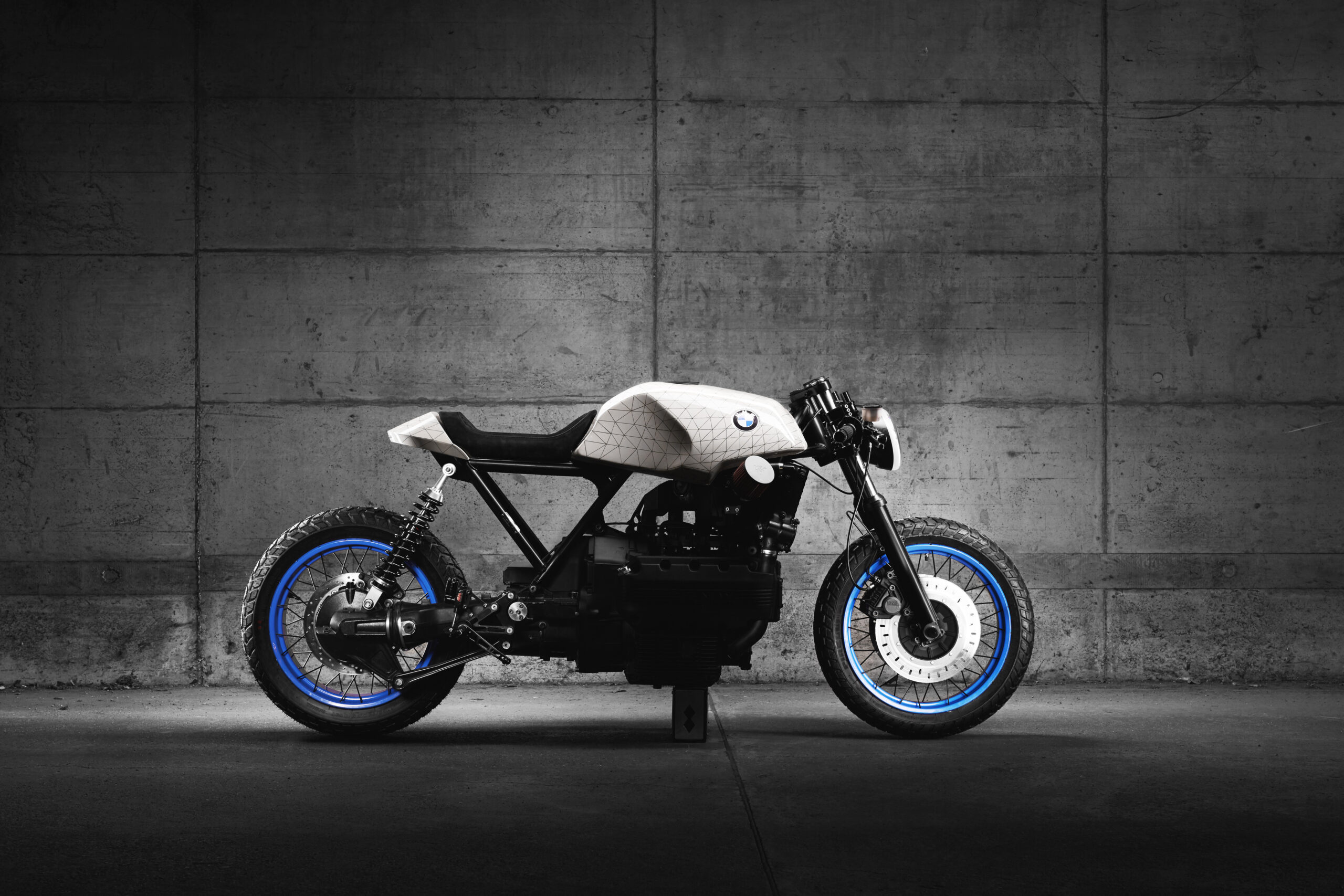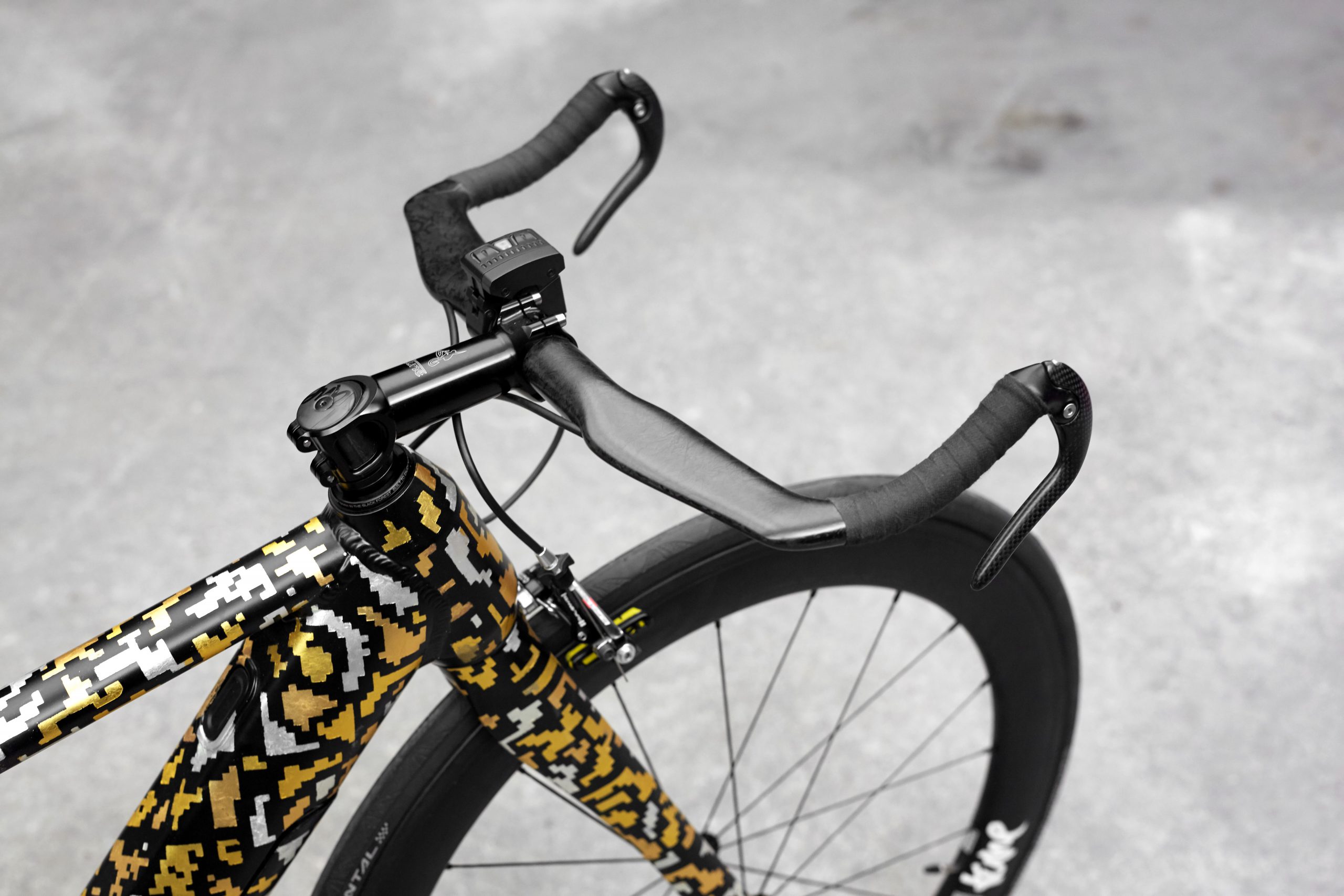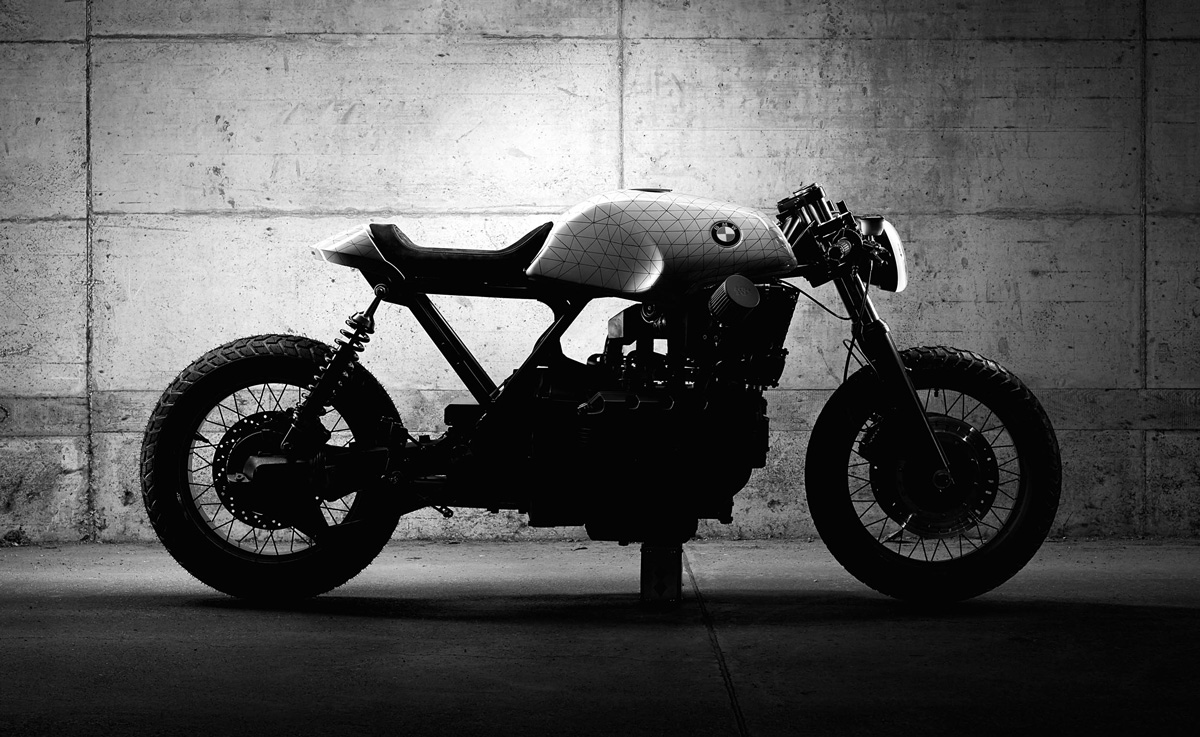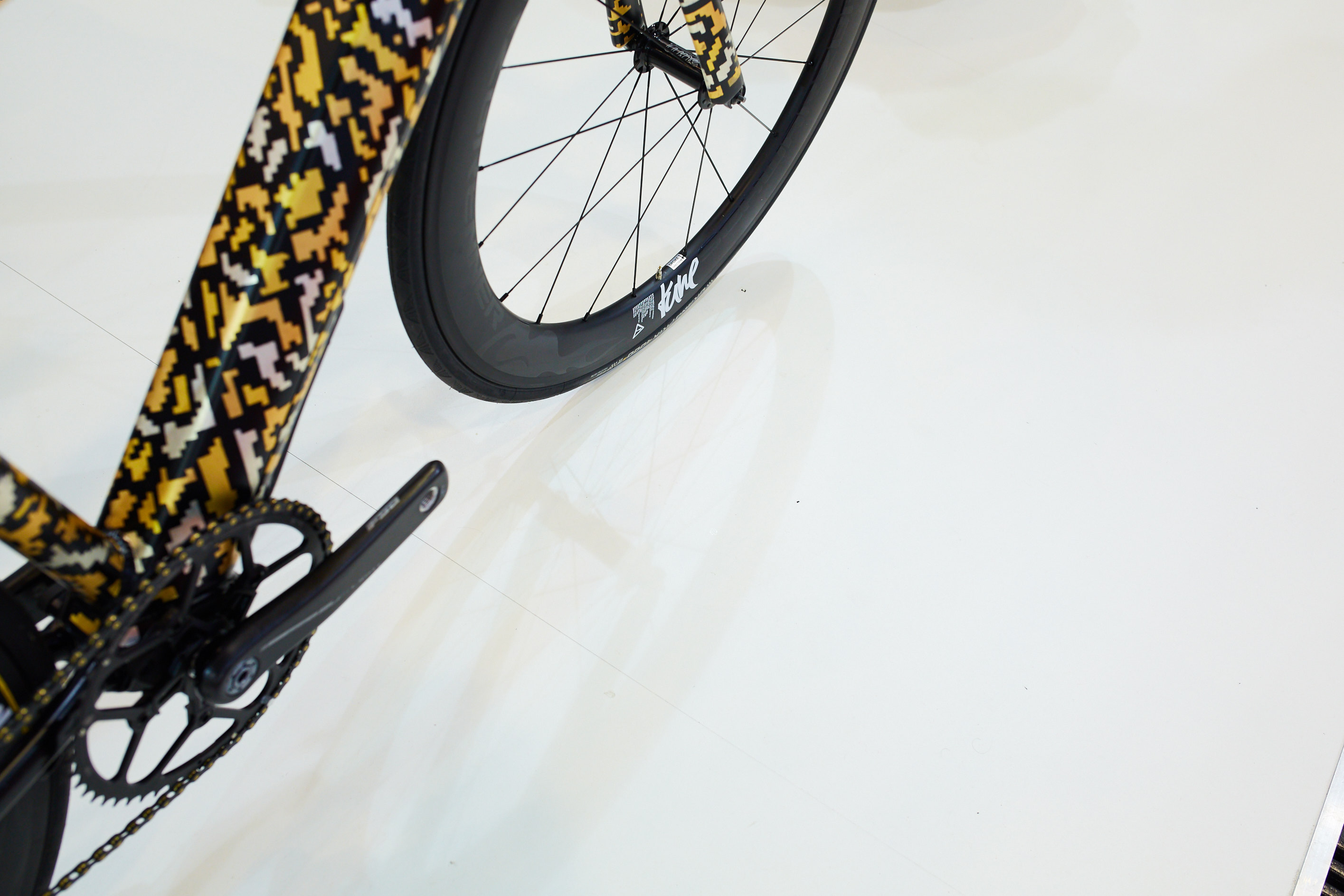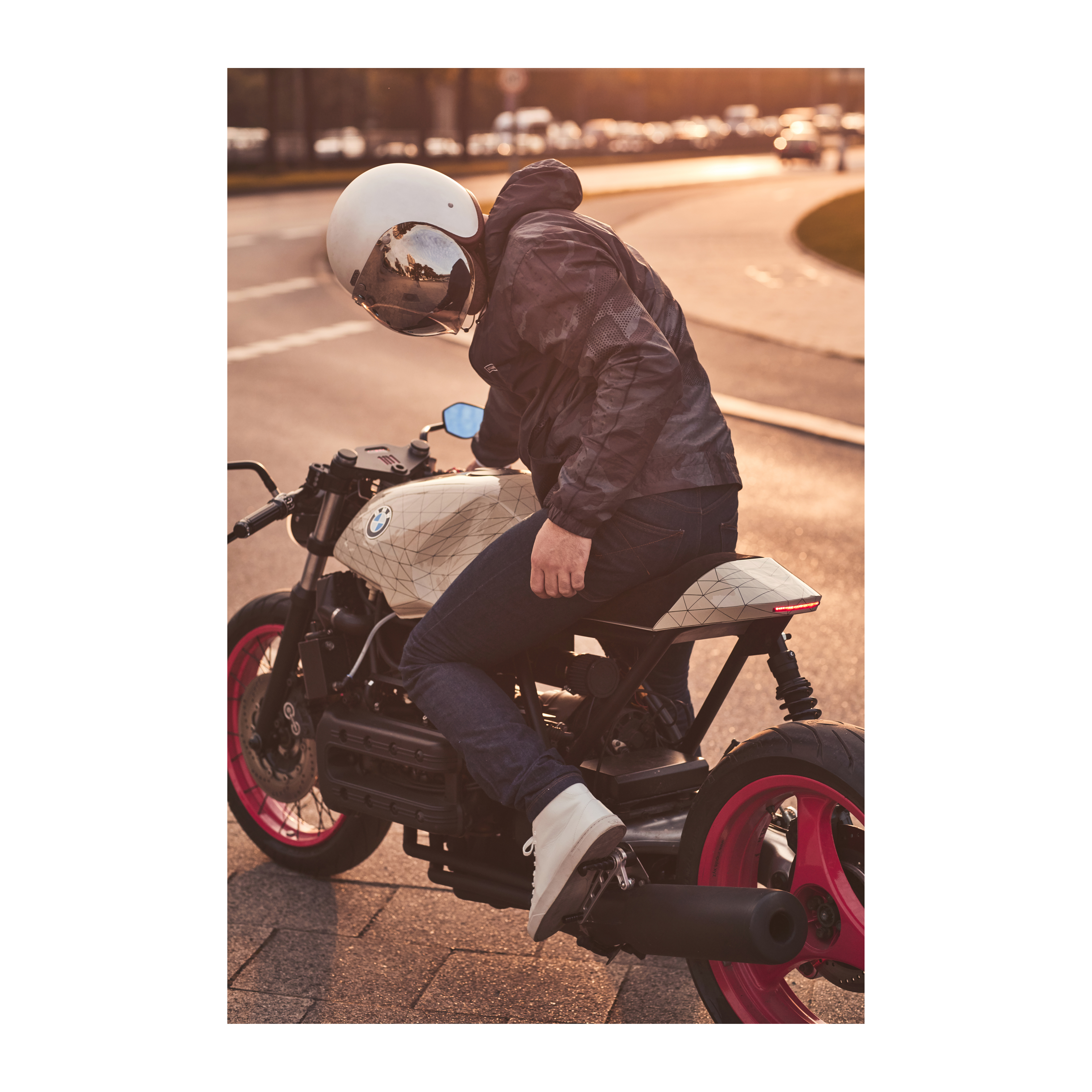K101 Die alte BMW K100 wurde von Impuls entkernt und komplett neu aufgebaut. Als künstlerische Analogie zu diesem Ansatz habe ich die Maschine zurück in 3-D gescannt, die Meshes digital herausgerechnet, um dann die Polygone händisch und iterativ mit Tusche auf das Motorrad zu zeichnen, um mich so der form des Motorrads künstlerisch zu nähern.
E101 Gold übt eine besondere Faszination aus und kann trotz seiner schwer belasteten Geschichte nicht überblenden, dass das Material eine unglaubliche Tiefe, Schönheit und Komplexität besitzt. Diesem kann man sich künstlerisch nur schwer nähern, wenn man es nicht wie üblicherweise zu Prunk und Opulenz gebrauchen möchte. Die Chance, die das elektronische Rennrad geboten hat, ist, das Material mit seiner Verwendung und Erscheinung zu brechen. Den unmittelbaren Wirkungen des Goldes habe ich ein Tarnmuster aus Pixeln entgegengesetzt. Die partielle Vergoldung macht das ungewöhnliche Objekt zu einer vielschichtigen Erfahrung, das Muster heißt konsequenterweise „München Camouflage“ und ist eine Anspielung auf den Überfluss und das Zurschaustellen von Materialismus. Das Fahrrad wurde in traditioneller Ölvergoldung von Hand mit echtem, 24- karätigem Blattgold, Weißgold und Rotgold versehen. Die Komplexität der partiellen Vergoldung mit drei Tönen erfordert mehrmonatige Handarbeit, für die technische Vollendung des Fahrrads sorgen die Münchner Edelschmiede Impuls und der Antriebshersteller Fazua. In diesem Zusammenhang wurden auch die handvergoldeten Schuhe in Kooperation mit dem Münchner Schuhlabel VOR Shoes veröffentlicht.
Credits: Impuls, Stefan Hobmeier, Philipp Wulk
K101 The old BMW K100 was gutted by Impuls and completely rebuilt. As an artistic analogy to this approach, I scanned the machine back into 3D, digitally calculated the meshes, and then drew the polygons manually and iteratively with ink on the motorcycle in order to artistically approach the shape of the motorcycle.
E101 Gold exerts a special fascination and, despite its heavily burdened history, cannot obscure the fact that the material possesses incredible depth, beauty, and complexity. It is difficult to approach this artistically if one does not want to use it for pomp and opulence, as is usually the case. The opportunity offered by the electronic racing bike is to break with the material’s traditional use and appearance. I have countered the immediate effects of gold with a camouflage pattern made of pixels. The partial gilding turns this unusual object into a multi-layered experience. The pattern is aptly named “Munich Camouflage” and is an allusion to excess and the display of materialism. The bicycle was hand-gilded using traditional oil gilding techniques with genuine 24-carat gold leaf, white gold, and red gold. The complexity of the partial gilding with three tones requires several months of manual work, while the technical perfection of the bicycle is ensured by the Munich-based luxury smithy Impuls and the drive manufacturer Fazua. In this context, the hand-gilded shoes were also released in cooperation with the Munich shoe label VOR Shoes.
Credits: Impuls, Stefan Hobmeier, Philipp Wulk
